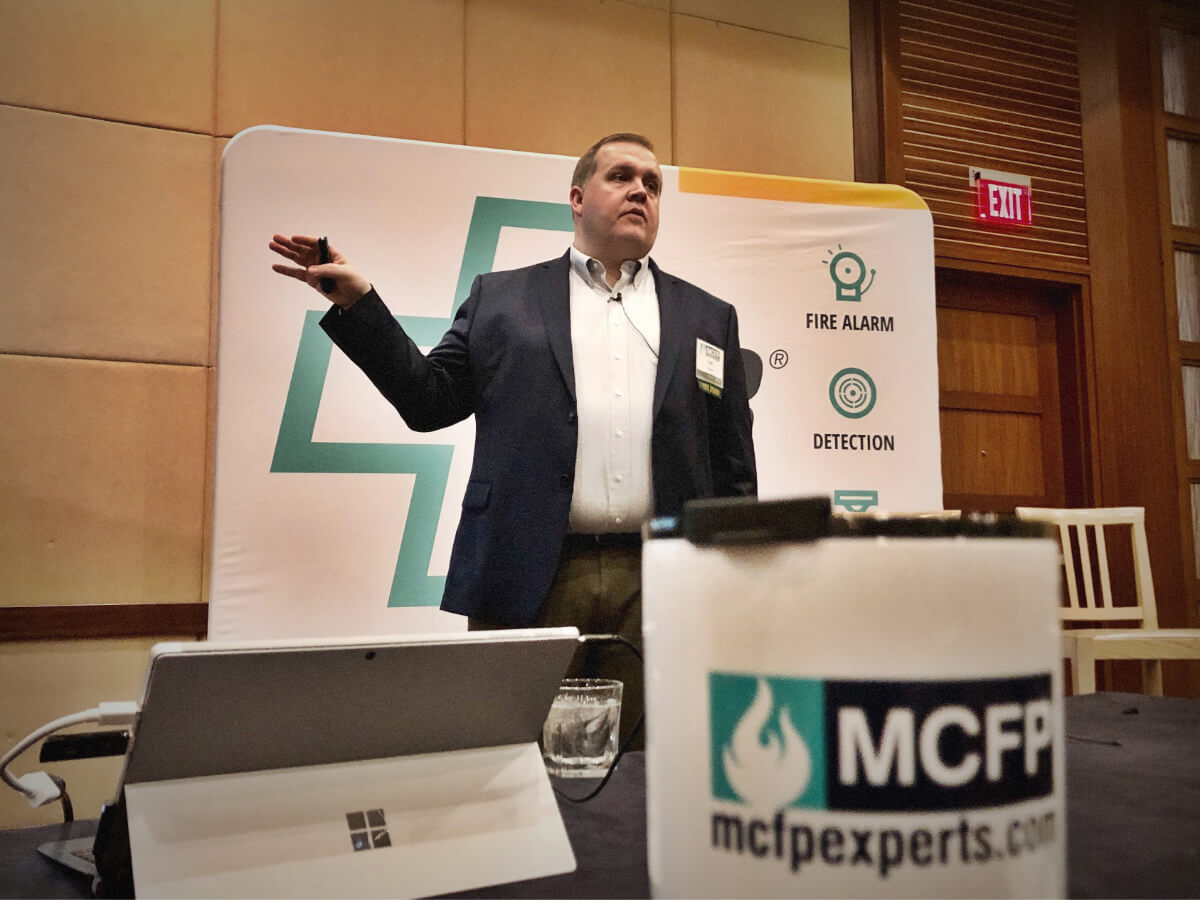Lithium IOn batteries in data center UPS Systems, Part 1: nfpa 855 Requirements for battery locations and fire separations
This video introduces the new practice of using lithium ion batteries in place of lead acid batteries for data center UPS systems and how the new standard (NFPA 855 Standard for the Installation of Stationary Energy Storage Systems) applies. [transcript available below]

Lithium IOn batteries in data center UPS Systems: nfpa Requirements [Transcript]
I want to bring up the last topic and talk about changing battery technology for uninterruptible power supplies, UPS's. In this picture, these two pictures on the slide, are of a remodel in a data center battery room. The picture on the left is valve regulated lead acid batteries, as part of the battery system in the data center. And in this particular data center where these pictures were taken, that technology was swapped out for the picture on the right where those are lithium ion batteries as part of the UPS systems. And so a lot of you are aware that there's a new standard out there for energy storage systems. And basically at this point, it applies to almost all battery installations, but especially it applies to lithium ion battery installations. And that's NFPA 855.
NFPA 855 4.4.2 - Stationary Energy Storage
NFPA 855 is the standard for the installation of stationary energy storage systems and through chapter four, that standard, applies to most data centers. Data centers would be considered a non-dedicated building with ESS. ESS in the standard is an energy storage system. Within chapter four is this table, and I've recreated it here to help you for reference. Table 4.4.2 talks about indoor ESS installations. And it has two columns; dedicated use buildings and non dedicated use buildings. So we would be following the non-dedicated use buildings for battery installations inside data center buildings. And then the rows are the different portions of the 855 standard that would apply, such as administrative; what is the administrative requirements for the standard? What's the separation requirements of the standard? And even what's the smoke and fire detection portions of the standards? So, let's talk through some of these and help give you some basics of 855 and how it applies to data centers.
NFPA 855 4.3.6 - Equipment Requirements
General requirements talk about ESS equipment requirements, the actual equipment being installed inside your building. It talks about emergency plans for systems, and then installation requirements for these systems, including electrical, what kind of signage you need, how they need to be separated from other areas, the locations they can be in the building, and what type of security do you need to have in place when you have ESS systems in your buildings. I want to highlight the separation requirement for the battery room fire rating. Section 4.3.6 for separation requires separate spaces for the area containing the ESS from other areas in the building. And it says that it needs to be divided by a two-hour rated fire barrier. And that's a very important piece. Most of the data centers that are receiving retrofits, from older battery technologies to lithium-ion batteries, do not have a two hour rated fire separations between the battery room and the rest of the data center. So this is a big piece that may need to be upgraded in your data center. If you're considering changing battery technologies for elevations of where the battery rooms can be in the data center, they're expected in the standard to be installed above grade, so above ground, but they can't be in the building any higher than the highest fire department ladder can reach.
NFPA 855 4.3.6.1 - Below Grade and Rooftop Installations
For below grade installations, they're not permitted. So you can't really put these systems, ESS systems, in basements unless it's approved by the AHJ and then if you do, the standard has additional rules that will need to apply through section 4.3.6.1. For rooftop installations, which is frankly a little common out there in urban areas, to put battery can trainers up on the roof, they must be approved by the AHJ and ESS installations. Can't obstruct the fire department, rooftop installation. So you can't cover the entire roof of the container and not allow the fire department any way to help ventilate smoke from any other fires that might happen within the building.
Our next webinar series is coming soon! Get updates on our upcoming Data Center webinar.
Get MCFP updates


